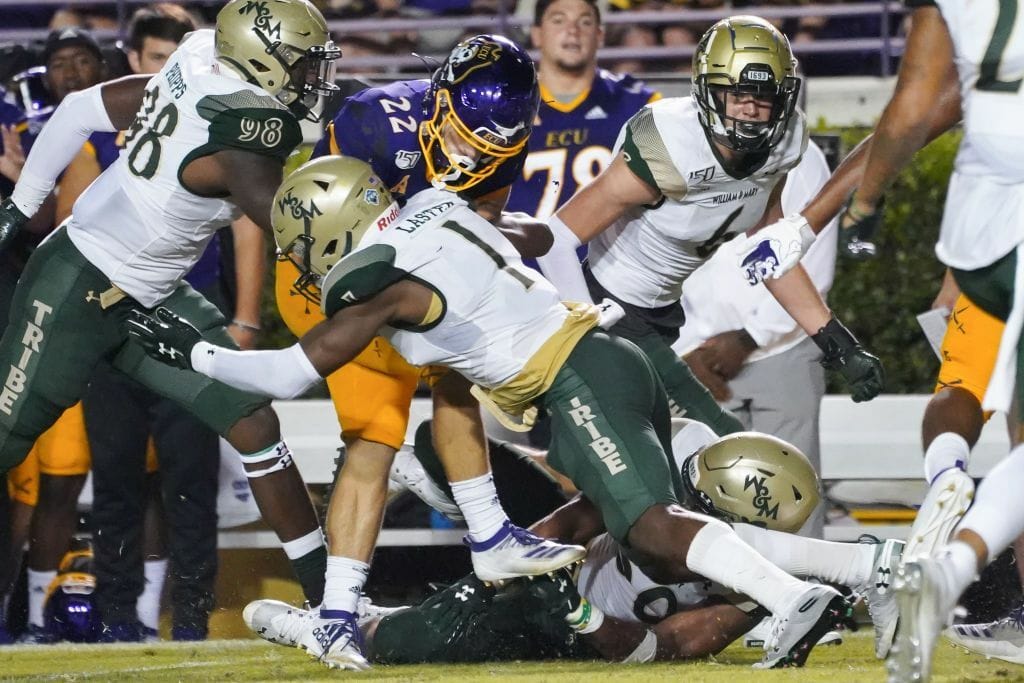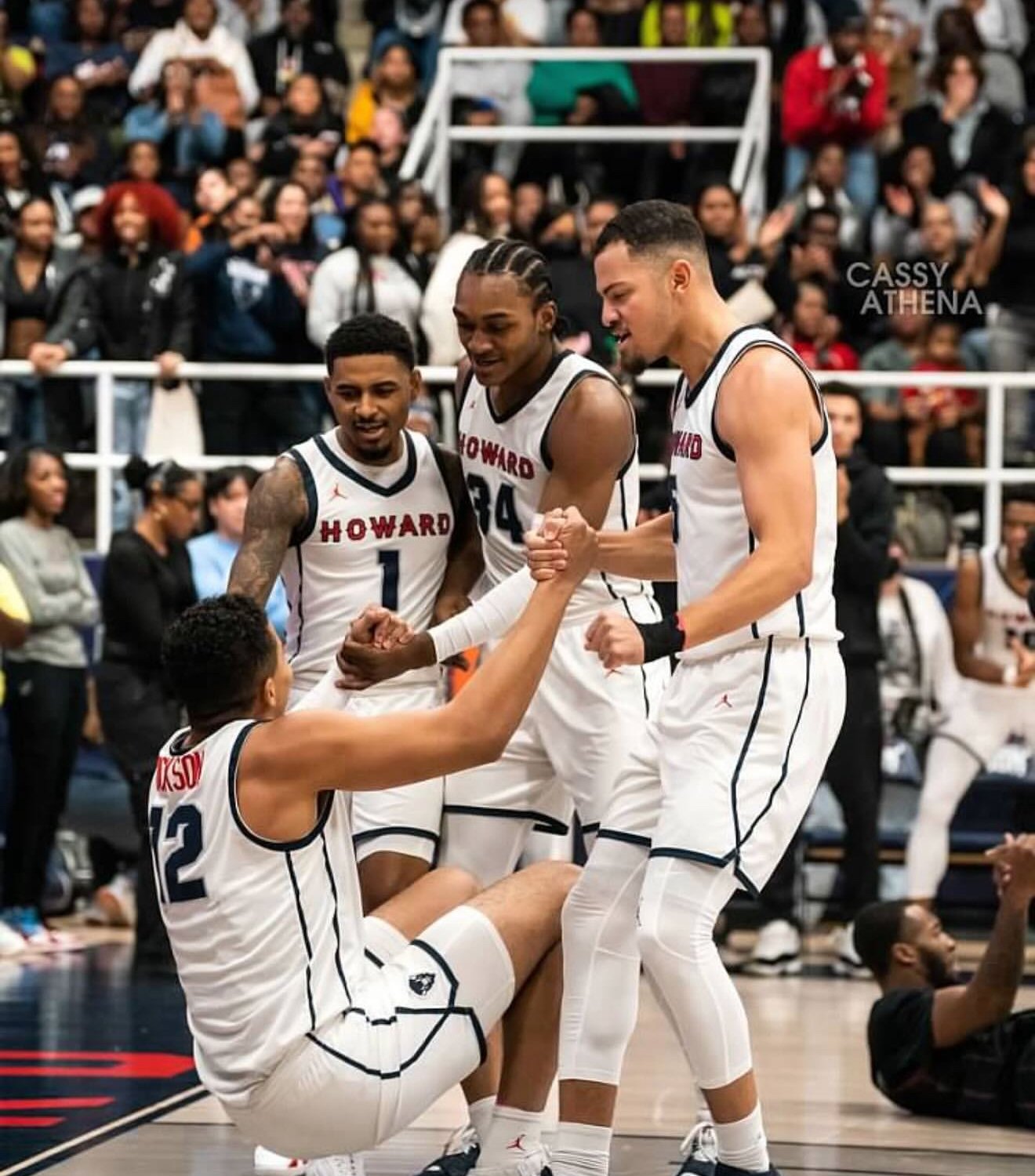Photo Credit: Getty Images
Good morning, and thanks for spending part of your day with Extra Points.
Friends, the rest of this week is an especially great time to upgrade to a paid subscription to Extra Points. Not only will your $7/mo, or $70/year give you four newsletters a week, bonus audio content and access to the Extra Points Discord Chat Room, but it will also give you two Extra Points stickers, absolutely free.
Also, you get the satisfaction of knowing you’re supporting independent journalism about college athletics. You can subscribe right here.
If you don’t have seven bucks a month to spare, but still want to support Extra Points, you can buy two of the stickers for just $5. We also sell multiple stylish and comfortable t-shirts, thanks to our friends at Homefield Apparel.
Finally, I am more than happy to give heavy discounts on subscription for your department. I’ve worked with several universities this semester, giving Extra Points subscriptions to all of their students, hopping in for a Zoom Q&A, and more. If you’d like subscriptions for your group, shoot me an email at [email protected].
Today’s story takes a closer look at the last few weeks over at William & Mary.
Dr. Katherine Guthrie, a professor at William & Mary’s business school, describes her university as a “unicorn”.
The school was one of the first to be tagged with the “public Ivy” designation, but unlike many other academically selective public universities, it maintained a relatively small enrollment, with under 9,000 undergraduate students. Most of the other schools with a public Ivy designation are more than twice that size.
The school’s decision to drop seven sports last month wasn’t especially unusual. Myriad athletic departments across the country, including those far more prominent than William & Mary’s, have announced sport cuts over the last several months, as they grapple with dramatic short-term revenue declines thanks to COVID. Big schools, small schools, academically selective schools and open enrollment schools have all faced the same music.
But what happened next was unusual. The swift and aggressive pushback from faculty and community members, which included faculty members exploring the rare option of a no-confidence vote in the athletic department, not only has pushed the school to reexamine those cuts, but might even upend the athletic department’s overall operating strategy. The latest dramatic turn to this saga came Wednesday when, as Richmond.com’s David Teel first reported, Samantha Huge, the school’s athletic director since 2017, had given her resignation.
Turns out, the pushback over The Tribe’s sports cuts wasn’t just about the fate of a gymnastics program in the Colonial Athletic Association. Rather, it was about the overall athletic strategy, as well as who gets to drive it. Ultimately, it’s part of the larger discussion, becoming more acute with each passing week, about what kind of success mid-major programs aspire for in the modern era.
Shortly after Huge arrived at William & Mary from Texas A&M, she commissioned a new athletic department strategic plan. That plan warned that the school’s broad-based athletic department offerings, a source of pride in the community, were not financially sustainable, and instead argued for more focus on more visible sports like football and men’s and women’s basketball.
Not everybody was on board with that plan. Guthrie penned a critical letter that was shared across the faculty, criticizing the athletic department for not involving faculty in these strategic decisions, potentially alienating donors, and over the wisdom of increasing investments in football and basketball at the expense of funding Olympic sports programs. She argues:
So why were seven participation sports sacrificed under false pretenses? W&M is striving to build nationally competitive football and basketball programs. Not only is such a vision a poor fit for our small and academics-focused institution, but also an extremely risky and ill-advised business venture.
On October 1, former Tribe swimmer D. R. Hildebrand also penned a widely circulated open letter, sharply critiquing Huge’s use of consulting services and general decision-making over the direction of the athletic department.
Perhaps the biggest question? What kind of athletic department does William & Mary want to have?
This might seem a little strange, but maybe a good athletic comparison to William & Mary is Stanford. The Cardinal clearly try to compete at a high level in high profile sports like football and basketball, but historically, they’ve also taken pride in a large athletic department that competes in multiple sports, while also finding success in the classroom.
Huge apparently felt the same way: she worked with current Stanford athletic director Bernard Muir when both were at Delaware, and thought so highly of the way Stanford communicated their sport cuts that William & Mary lifted passages of it wholesale in their own announcement, further rankling the faculty and community.
But ideological similarities aside, Huge appeared to want to chart a different course for the Tribe athletic department. In 2018, Huge commissioned the PICTOR Group, a college sports consulting firm, to help design a new strategic plan, overriding previous athletic department plans that were developed, in consultation with faculty members. That report advocated for the athletic department to devote additional resources to its most visible sports, like men’s basketball, while arguing that the school’s current offering of Olympic sports cost too much.
“Given the organizational structure and the insufficient funding levels, W&M Athletics’ current financial model is not sustainable,” the PICTOR Group report stated.
It went on to cite Loyola (Chicago) and Villanova, two programs that have enjoyed recent deep runs in the NCAA men’s basketball tournament, as what possibilities await when you narrow your focus as an athletic department:
W&M Athletics has a tremendous opportunity to build an excellent athletics program and create a culture that demands success, but it must be committed to winning CAA championships in football and men’s and women’s basketball. Having success in these three varsity programs will bring prestige and visibility to not only the athletics program, but to the entire university community. It is critical that W&M Athletics be intentional about allocating and aligning operating budgets, staffing and resources with competitive expectations. The high-profile sports of football and men’s and women’s basketball are uniquely positioned to build a university community when they win. These community-building sports create school spirit, unify the local community, build enthusiasm and enhance revenues. As realized by other mid-major institutions, W&M Athletics has a unique opportunity to establish consistent success in football and men’s and women’s basketball. Winning CAA championships and success on the national stage can lead to increased visibility, revenues, fan attendance and student applications for admission.
What PICTOR is describing here is the so-called Flutie effect, named for the diminutive quarterback whose Hail Mary TD winner against Miami benefited Boston College’s admissions department. Generally, the mid-major Cinderella from each NCAA Tournament will see a spike in donations and applications, like Loyola did following its men’s basketball team’s improbable journey to the 2018 Final Four. There are even a handful of institutions, like Gonzaga, or Boise State in football, where you could credibly argue that athletic success meaningfully changed the course of the entire university.
The trouble with the Flutie effect is that for every Gonzaga in D1, there are dozens and dozens of Not Gonzagas, the many schools that staked similar hopes on their football or men’s basketball teams, but simply don’t win enough games. The bonuses that a school may enjoy from a Cinderella run in the NCAA Tournament also don’t last forever: a school needs to keep winning in order to sustain the momentum, something that virtually every mid-major who wins a few games in March has been unable to do. Just ask George Mason.
Betting on the Flutie Effect at William & Mary, the bet Huge was ostensibly wagering, was even harder to fathom, given that the school has literally never made the NCAA Men’s Tournament. Ever.
The math gets tricky for football as well. Football is clearly a moneymaker at the Power 5 level, where even lousy teams enjoy media rights contracts that pay out tens of millions of dollars in revenue each season. No matter what these schools might say in public about “profitability”, almost all P5 football programs make money.
But at the FCS level, that just isn’t the case. Very few FCS schools generate any money from media rights, and the ones that do only earn modestly. Nobody is selling out 60,000 stadiums, or even playing in them. As I’ve been told by a number of FCS athletic department officials, it isn’t uncommon for a successful team to actually lose money hosting an FCS playoff game. You don’t play FCS football for the money.
William & Mary’s Zable Stadium doesn’t even fit 15,000 fans. Even if increased football success leads to improved ticket sales, how much more money could the school even hope to earn? In their 2019 financial filings with the NCAA, William & Mary reported a little under $1 million in ticket sale revenue across all sports. In their best case scenario, could they earn $2 million? That would be more than many FBS institutions make!
So, what was the school really hoping to accomplish? In an interview, Dr. Guthrie told me the school is looking to grow enrollment by potentially a thousand undergrads; seeing as the school accepts under 40% of their freshman applicants, finding other students interested in attending the school shouldn’t be too difficult.
In his letter, Hildebrand openly wondered if the school was positioning to join a new athletic conference. Even if that were the case, it’s hard to imagine the endgame. William & Mary already plays in one of the best FCS football leagues in the country. Short of a massive athletic budget increase, there are few other athletic conferences nearby. Was the school hoping to find a way to join former conference-mates George Mason and VCU in the A-10? Were they hoping to eventually jump to FBS?!?
The fact that this isn’t totally clear underscores the importance of communicating your vision with everybody.
You can decide that funding a broad-based athletic department is no longer in the best interest of the school, and that it makes more sense to double-down on a few specific programs. Plenty of schools across the country have decided to do exactly that. But that would be a deviation from what many William & Mary alumni and faculty believe the school should do, so that change would require rigorous communication and collaboration. Based on the response from the faculty and community, this clearly did not happen.
William & Mary is a school that already has an identity. It’s a smaller school, with a mostly residential campus, in a smaller town and media market, that’s been doing things a certain way for decades.
That doesn’t mean that doing things the way you’ve always done them is always the right thing to do. But it does mean that making big changes requires more coalition building than just sheer force of will.
William & Mary President Rowe has even acknowledged that defining what success looks like is challenging at this school. Quoted here, by Richmond.com:
There is a core conflict here at William & Mary that we need to own as a community because it is a conflict very specific to William & Mary,” Rowe said last month. “As I have listened to students and staff and talked to friends of Tribe athletics, fans and donors, I hear deep contradictions in what we mean by excellence and competitiveness in a Division I setting.
You might be able to bull rush your way to an answer at other schools. But the last month has made it clear: it won’t work at William & Mary.
Thanks again for spending some time with Extra Points. If you enjoy these newsletters, please help spread the word. Word of mouth is the biggest way Extra Points grows.
Questions, comments, business inquiries, angry missives, news tips and more can be sent to [email protected], or to @MattBrownEP on Twitter.

The Intercollegiate and Extra Points are proud to partner with the College Sport Research Institute, an academic center housed within the Department of Sport and Entertainment Management at the University of South Carolina. CSRI’s mission is to encourage and support interdisciplinary and inter-university collaborative college-sport research, serve as a research consortium for college-sport researchers from across the United States, and disseminate college-sport research results to academics, college-sport practitioners and the general public. You can learn more by visiting CSRI’s website.



















